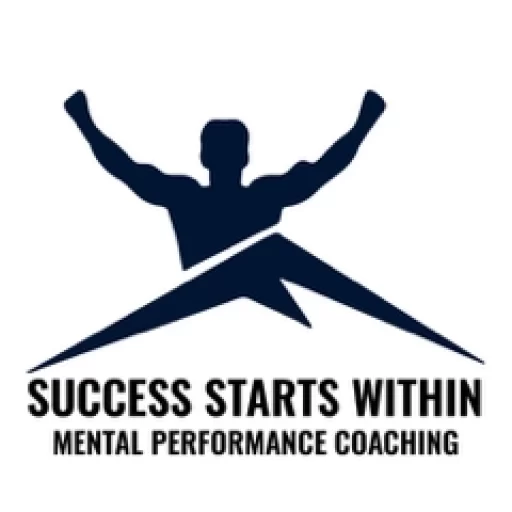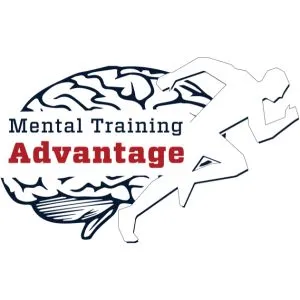One mistake isn’t bad.
Two, three, and four mistakes…now that’s trouble.
And while mistakes are impossible to avoid – in fact, avoiding mistakes leads to fear and only makes your play worse – they can be minimized.
IF you learn how to adjust and let go quickly.
As a mental performance coach, I work with many athletes from all different sports on moving on from mistakes more efficiently.
To move on from mistakes efficiently, we can’t overlook the necessity of making adjustments.
Yes, you want to let go and you want to move on to the next play, shot, or drive. But if you fail to make an adjustment, you may find yourself making the same mistake over and over and over again and feeling confused and frustrated as to why it’s happening.
So what you’ll learn in this article is why it’s so important to make better adjustments in games, what you need to be careful of, and a simple strategy that will help you make quick and effective adjustments after mistakes.
Why You Need to Adjust After Mistakes
Shouldn’t you just let go of a mistake and forget about it as soon as possible?
Well, yes, that’s the goal. But as soon as possible doesn’t mean without learning from the mistake.
Mistakes themselves are not negative. It is the way you respond to mistakes that truly helps or hurts your game.
Respond to them in a productive way, and you improve your game. Respond to them in a negative way and you limit yourself and increase the chances of making more mistakes.
I was talking with a golfer I work with about a recent round he played. The round didn’t go great, and a big reason for that was his poor tee shots.
Shot after shot was bad. And he got more and more frustrated.
Until he made an adjustment.
Unfortunately, the adjustment didn’t come until the eighteenth hole…a little late, he admitted.
But he made the adjustment nonetheless, which, as he and I discussed, is a great step in the right direction.
Had he made the adjustment sooner, however, he likely wouldn’t have continued to have poor tee shots. Because the most interesting part of it all was the fact that the adjustment was simple. Something that is more often than not the case, as we’ll talk more about later on.
But, as he put it, he was being stubborn. He just kept getting mad about the last tee shot and moving on quickly to the next shot, and not learning anything before the next hole.
And so the pattern continued.
This highlights the importance of making quick and better adjustments.
The quicker the adjustment, the quicker you turn your game around.
Another example is a softball player I worked with who struggled to make adjustments at the plate.
Following bad at bats, she would get mad at herself and try to just forget about the at bat. The forgetting about the at bat part was good, except she skipped over the learning part.
A key element to the process of moving on from any mistake or bad at bat.
A lot of times the reason she had a poor at bat was either due to timing or the fact she swung at bad pitches. Without thinking about this going into her next at bat, the chances of her repeating the same mistake increased.
When she focused on learning from bad at bats and adjusting, her consistency at the plate spiked.
Now, both of these examples show the importance of making better adjustments in games. However, there is a piece to making adjustments you need to be careful of that can turn the whole process into something that does more harm than good…overthinking.
Adjust…Don’t Overthink
I can remember being in the on deck circle during a baseball game, wondering where my hands should be. Were they in the right position? Should I lower them a little? Are they back far enough?
What about my load? Was I loading too slow? Too fast?
Like this, many thoughts would rush through my mind. And it didn’t stop once I got into the batter’s box.
It usually got worse.
I was overthinking.
It happened when I wasn’t hitting well or had made poor contact the previous at bat.
That is exactly what I try to get athletes not to do.
I had a tough time objectively evaluating my last at bat, taking one simple adjustment to try, and sticking to that. Instead, I would worry about getting out again, think of a million things I need to change, and try to focus on all of them at once.
It was a recipe for anxiety and disaster.
Luckily, I learned just how hurtful this type of thinking was and got a lot better at making simple adjustments. But I understand how easy it is to try and make an adjustment, only to see it turn into you overthinking.
If you’re naturally inclined to overthink and overanalyze, you must take caution when looking for adjustments.
You are inviting yourself to think, when thinking isn’t always your best friend.
That doesn’t mean you are destined to never make any adjustments. Forced to keep making the same mistake over and over again.
No, not at all.
What it does mean, though, is that you need to be aware of your tendency to overthink and work on being disciplined when it comes to making an adjustment.
You cannot allow yourself to overthink adjustments, otherwise you do more harm than good.
Strategy to Make Better Adjustments During Games
While you don’t want to overthink, we also know how valuable adjustments can be. They can be the thing that turns bad games into decent games and good games into great games.
Knowing how to adjust is the cornerstone of consistent performances.
To help you make good adjustments, while minimizing overthinking, there is a simple process you can follow.
This is a very similar process to the one I use in one-on-one mental performance coaching.
Step #1: Outline Your Main Mistakes
Every player has certain tendencies towards specific mistakes. You need to uncover what these are for yourself.
What are the most common mistakes you make? Why do you make these mistakes? Get as specific as possible.
The truth is, most mistakes you make are not that unique. They typically follow a pattern or a trend.
For example, some of the most common mistakes I made as a hitter in baseball included:
- Being too out in front
- Getting jammed
- Swinging at poor pitches
- Getting under the ball
The majority of my bad at bats could fall into one of those four categories.
This exercise is key to making better adjustments. Because once you know what your most common mistakes are, you can decide what adjustments need to be made ahead of time.
That way, during the game, you’re not really figuring out what adjustment to make, as much as you’re choosing from a list.
Step #2: Decide on an Adjustment for Each Mistake
Now that you have your list of your most common mistakes outlined, it’s time to identify the adjustment.
Go through your list and describe what you need to change or focus on to fix the mistake.
For example, here are the adjustments I would need to make based on my list:
- Being too out in front: let the ball travel
- Getting jammed: stay inside the ball
- Swinging at poor pitches: look for my pitch and be disciplined
- Getting under the ball: stay on top of the ball and swing down on the ball
These are the adjustments that made the most sense to me. When I would focus on them, they helped fix the problem that caused the mistake in the first place.
And that’s an important part of choosing your adjustments…they need to make sense to you and it’s okay if they only make sense to you.
The point is to provide yourself with clear fixes to the problems, so you aren’t stuck overthinking during the game.
Then, when you’re in the game and you make a mistake or are playing badly, go through your list, identify which mistake you’re making, and apply the pre-decided adjustment.
This saves you from thinking too much in the moment.
Step #3: Be Flexible
Alright, now I know I just explained how you need to create pre decided adjustments for each mistake. However, these are simply guidelines.
They work most of the time, but on some occasions the mistake you make isn’t on your list or the adjustment isn’t working.
Majority of the time they will be the same mistakes and the adjustments will work, but what do you do on those rare occasions?
You stick to the underlying principle of the exercise: focus with one simple adjustment.
If you make a mistake that wasn’t on your list, be flexible and think of another adjustment. Or maybe try one of your adjustments and see if it works.
But no matter what, you can’t try to apply five different fixes. Only use one at a time to keep things simple.
But games are always changing and they’re unpredictable. Follow the principle of sticking with one adjustment, but be flexible and willing to adjust again if the fix isn’t working.
Final Thoughts
One mistake isn’t bad. It happens. But two, three, four, and five mistakes…now that shows a lack of adjustment.
Athletes who perform well consistently know how to adjust and do so quickly and effectively.
And to make quick and effective adjustments, you can’t be caught up in your own overthinking and overanalyzing.
To help, think of your most common mistakes, choose a simple adjustment for each one, and use these during your games.
Thank you for reading and I wish you the best of success in all that you do.




